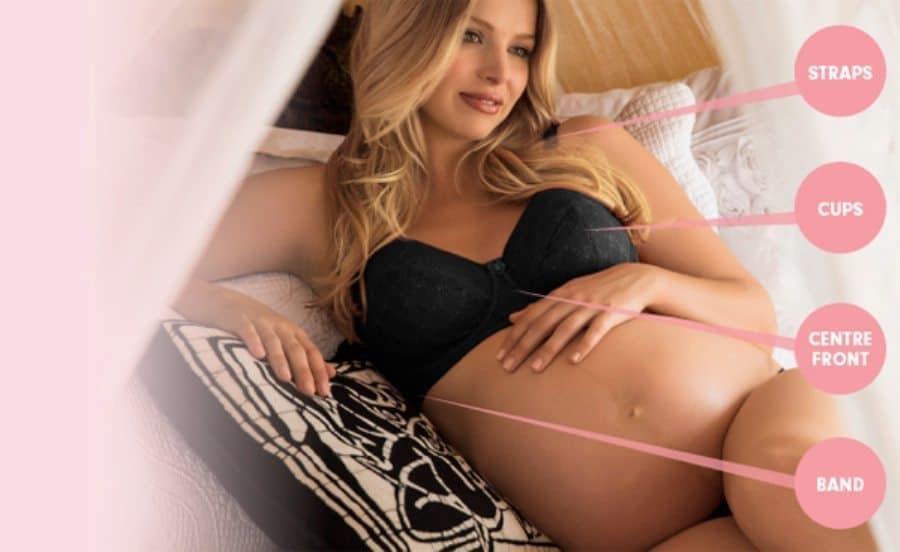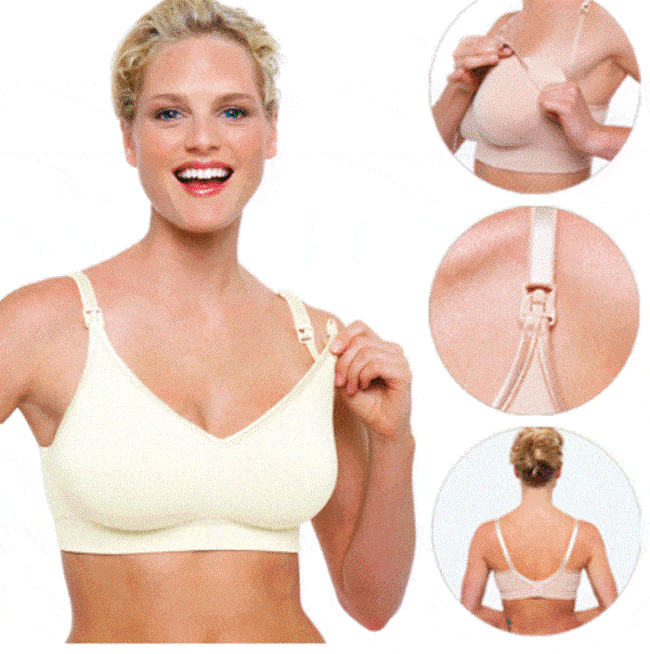One of the obvious anatomical changes a woman goes through during pregnancy is an increase in breast size. In fact, feeling fuller and more sensitive breasts is often the first tell-tale sign which indicates that you maybe expecting a new life. These symptoms often occur before you take any pregnancy tests which means your body knows its job of preparing milk to nourish the baby after birth. The breasts get larger in pregnancy due to hormonal shifts and weight gain. The breasts keep growing all throughout the pregnancy and it is common for the cup size to increase up to two-three sizes during the 9 months.
It is very important to invest in comfortable, proper fitting and supporting bras during the early stages of pregnancy as increase in breast size is inevitable. There exist two kinds of maternity inner wear in the market today by the names of:
Maternity Bras
Nursing Bras
Let’s have a look at each one of them.
Maternity Bra: They are usually made of stretchy fabric, adjustable and wide straps and additional hooks in the back to accommodate the growing chest size.
Nursing Bra: They are designed for breastfeeding. They provide good support by having wide adjustable straps with additional hooks in the back. However, their main feature is the additional clasps on top of the cups which makes access to breasts easier while breastfeeding. They are often made up of quick drying materials like cotton in case of any milk leakage incidents.
Table of Contents
When to buy maternity and nursing bra?
It’s a good idea to invest in a maternity bra as soon as the regular bra feels tight to the mother-to-be. Usually, by the end of first trimester, the mom-to-be gains enough weight in the breasts to not comfortably fit in her earlier undergarment.
Maternity bras are great for providing support for your growing body but they may not facilitate breastfeeding with as much ease as a nursing bra. Therefore, many women like to invest in good quality, highly adjustable nursing bras which they wear all throughout the pregnancy and the lactation phase.
Advantages of wearing a well fitting bra during pregnancy:
- It prevents the growing breasts from sagging and may reduce the occurrence of stretch marks in the chest area by providing proper support.
- It helps soothe breast tenderness and pain.
- It may help comfort back pain which is a common pregnancy complaint.
Few key points to remember when going shopping for pregnancy bras:
- The material should be highly breathable and quick drying. Cotton is the ideal choice! Although many other comfortable yet durable cotton blended materials are being introduced by maternity wear designers, always check if they suit your skin before buying a new fabric.
- Do not wear underwire bras during pregnancy or lactation. They are not very supportive for the growing breast tissues and the underwire acts like an obstruction. Certain studies show that underwire bras affect the milk ducts in rib area, thus reducing the milk flow to the the lactating breasts.
- When investing in a nursing bra, make sure that the clasp of the cup can be easily opened with one hand to facilitate easy breastfeeding while holding your infant.
- Get yourself measured by a bra fitting expert available in many popular stores. Get yourself measured every time you purchase bra during pregnancy and lactation as sizes may fluctuate.
- If investing in a maternity/nursing bra early into your pregnancy, choose ones with multiple adjustable hooks as an average woman grows up to 3 cup sizes and gains around 900 grams of breast weight by the end of her pregnancy.
- The shoulder straps should be extremely comfortable and wide.
The right pregnancy bra – this is one support that you need and must get all through out your pregnancy and feeding phase.
The author is a CAPPA certified childbirth educator.



